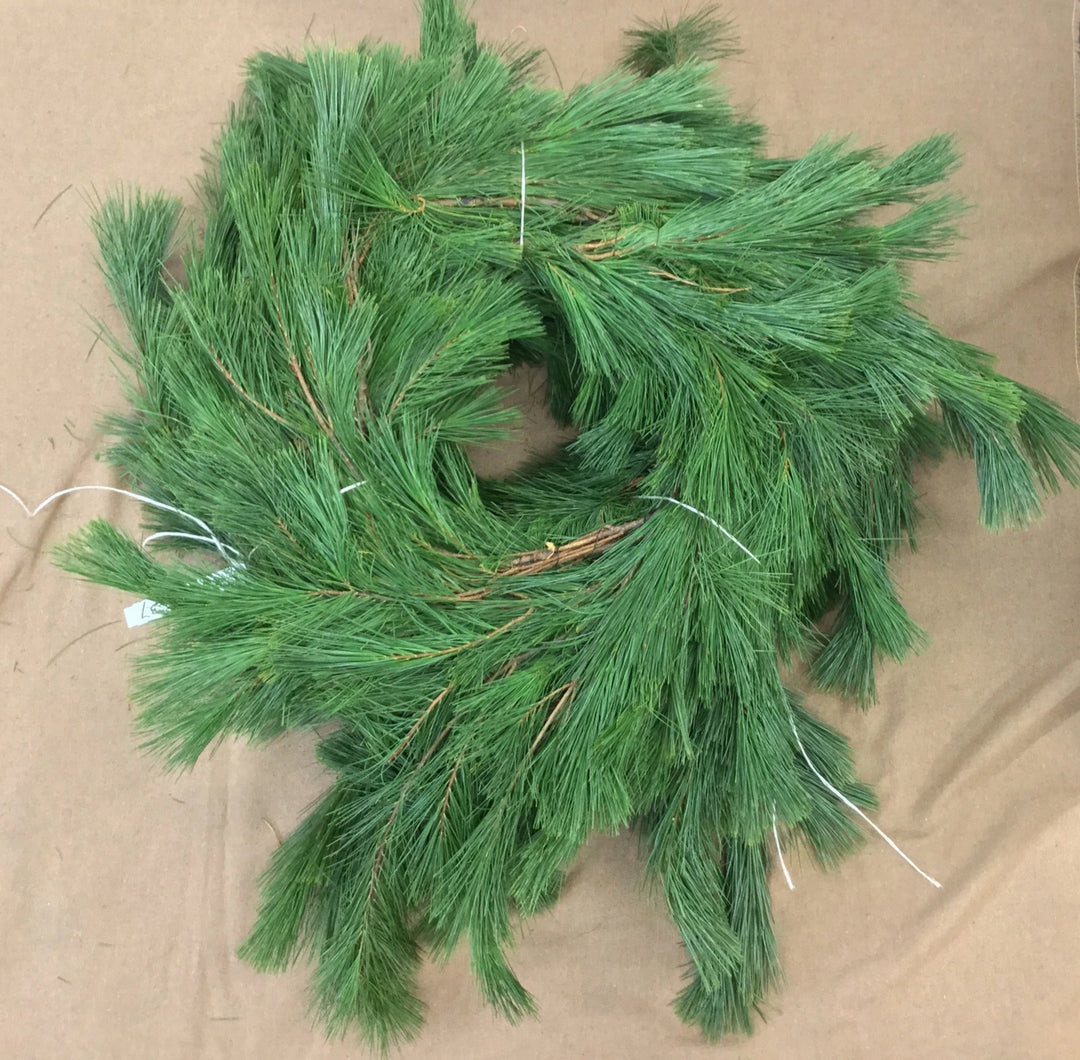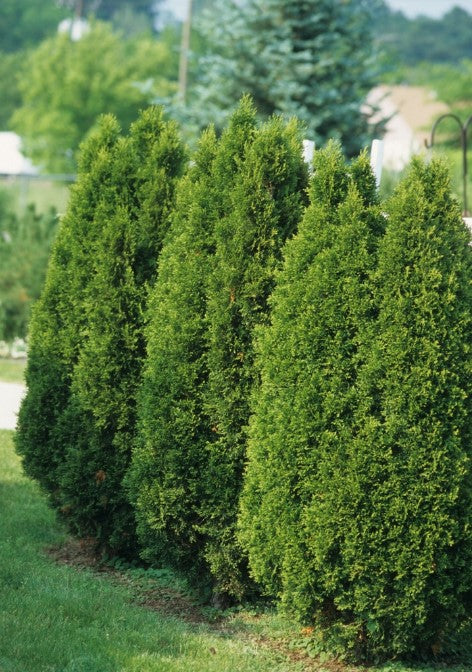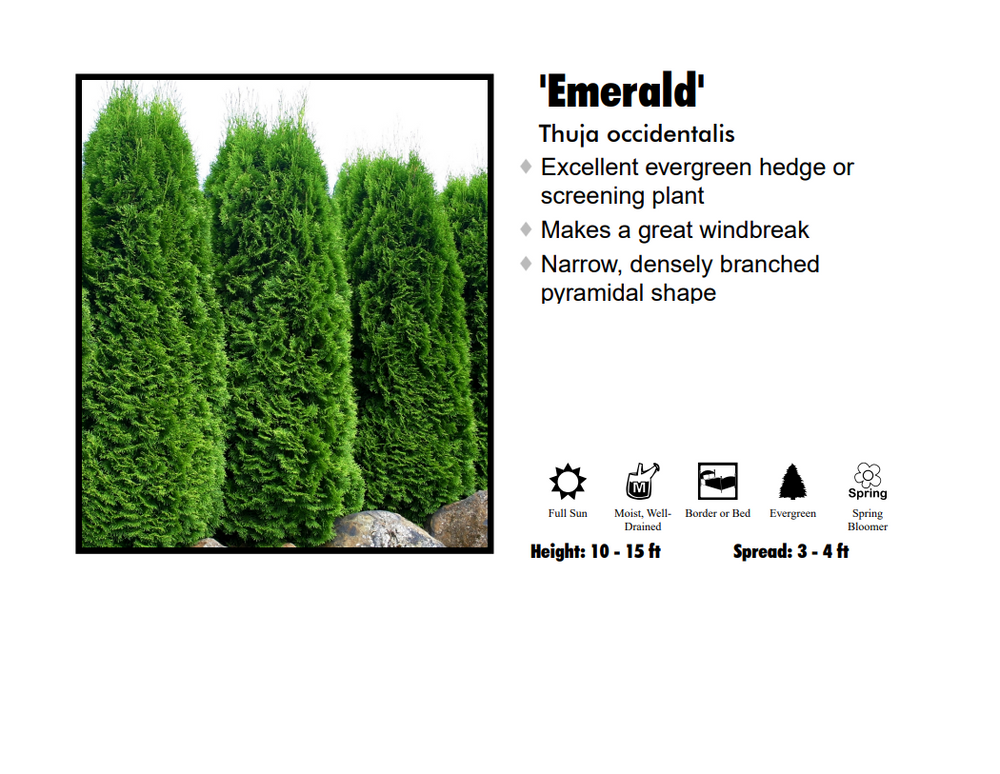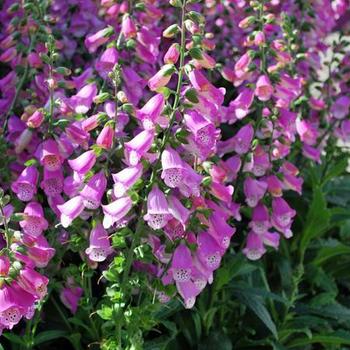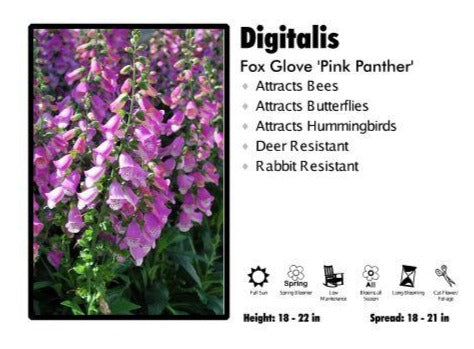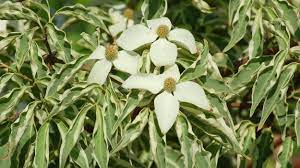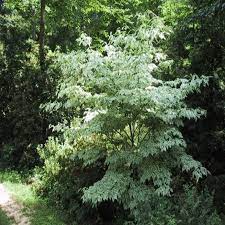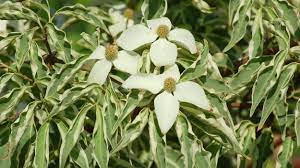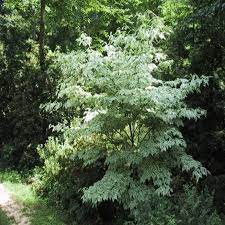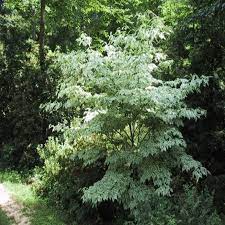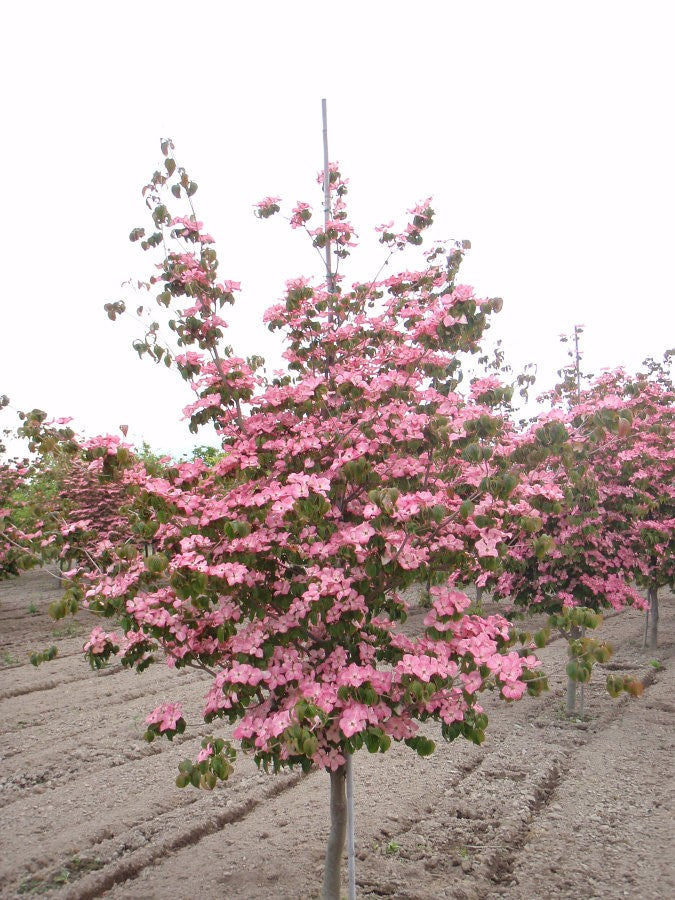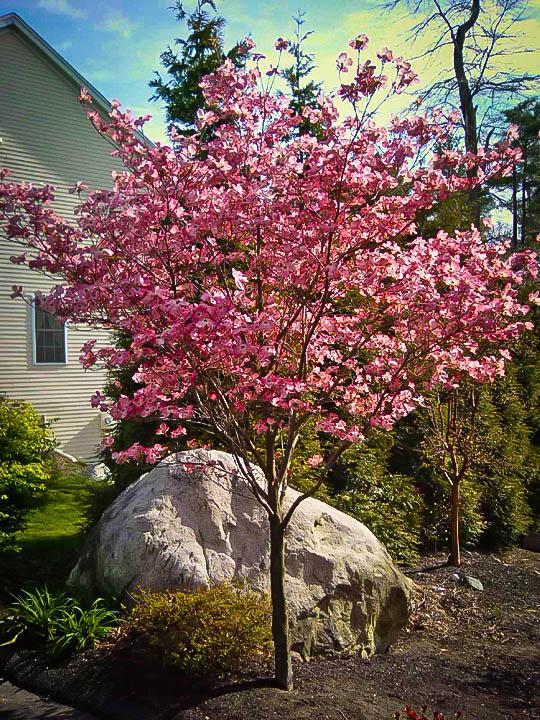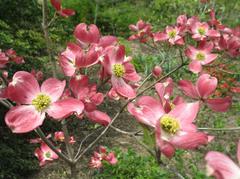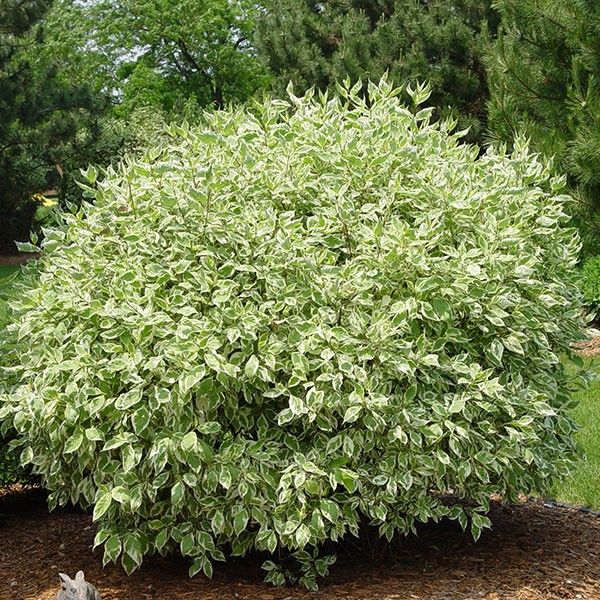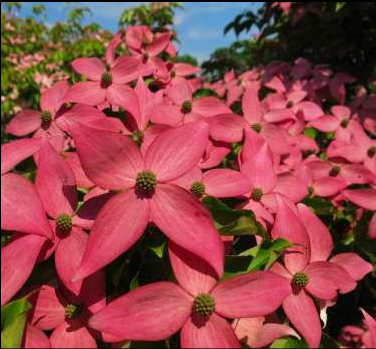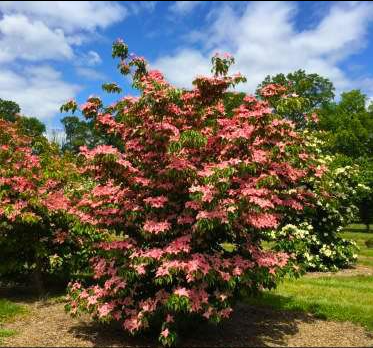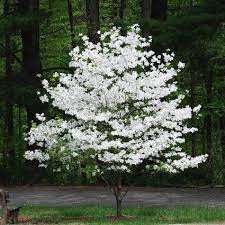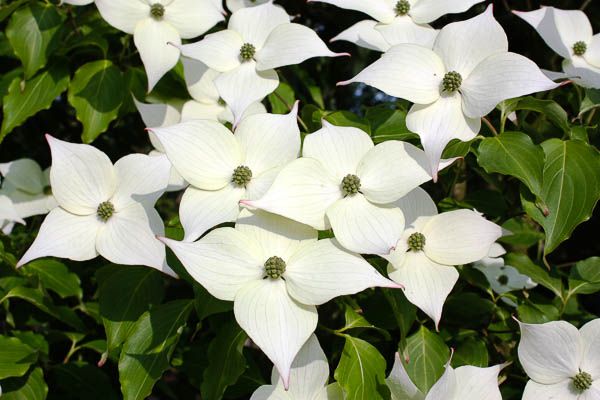Dogwood - Wolf Eyes Variegated
'Wolf Eyes' is a particularly popular cultivar of the Chinese dogwood (Cornus kousa). Like the species plant, which is native to China, Korea, and Japan, 'Wolf Eyes' is a multi-stemmed large shrub or small tree with white flowers that appear for up to six weeks in late spring. The form of Chinese dogwood is spreading, with multiple branches tracing a somewhat horizontal pattern. The fall foliage ranges from orange to a mohogany red.
The 'Wolf Eyes' cultivar also adds a creamy white edging to the light green foliage, and it is a smaller cultivar than the pure species, topping out at 15 feet rather than the 30-foot stature sometimes seen in C. kousa.
Older trees often develop a mottled bark (which also peels), lending this specimen further visual interest. The rounded berry that succeeds the flowers starts yellowish-green; it is surrounded by the white bracts. This is perhaps the origin of the cultivar name—the berries being the pupils of the wolf's eyes, the bracts being the whites of the eyes. The ripened berry is raspberry-like in appearance, bearing a red color.
'Wolf Eyes' has a fairly slow growth rate and can take five years or more to reach its full size when planted from a typical potted or balled-and-burlap nursery specimen. A growth of 12 to 24 inches per year is typical. Spring is the best planting time for Chinese dogwood. 'Wolf Eyes' can be expected to live for about 40 years.
| 15 feet tall; similar spread | |
| Sun Exposure | Full sun to part shade |
| Soil Type | Rich, humusy, well-drained soil |
| Soil pH | 5.5 to 7.0 (slightly acidic to neutral) |
| Bloom Time | May to June |
| Flower Color | Pinkish white |
| Hardiness Zones | 5 to 8 (USDA) |
| Native Area | Japan, China, Korea |
- Low stock - 1 item left
- Please Wait for Ready for Pickup Notification after Placing an Order. Thank you!


